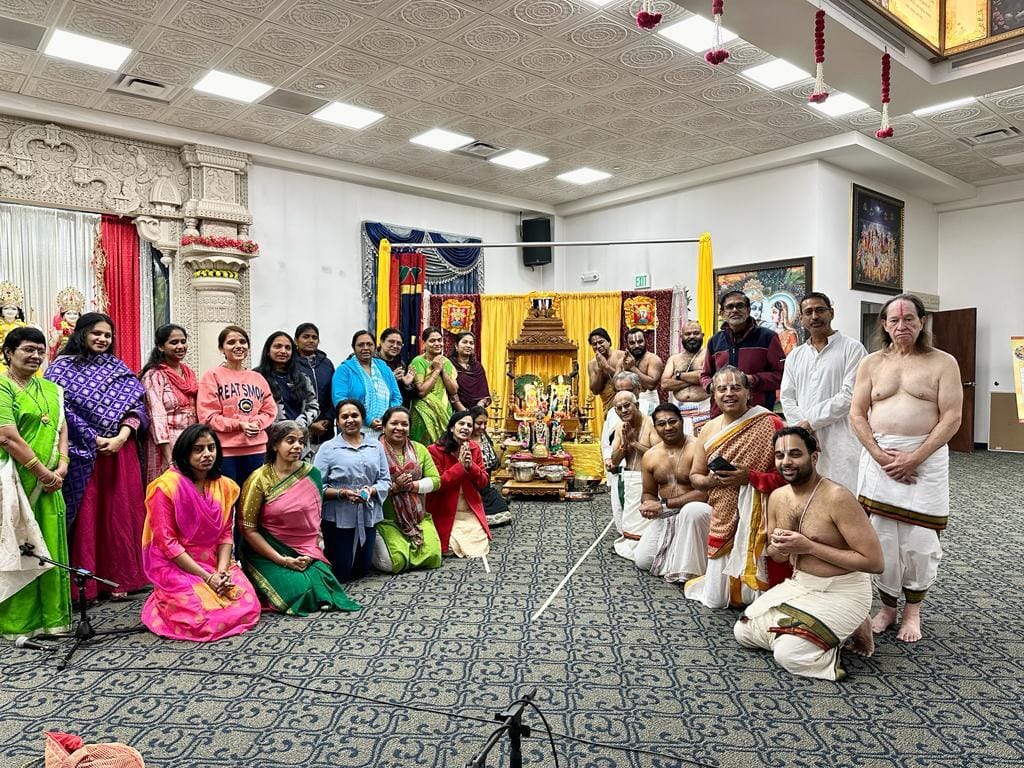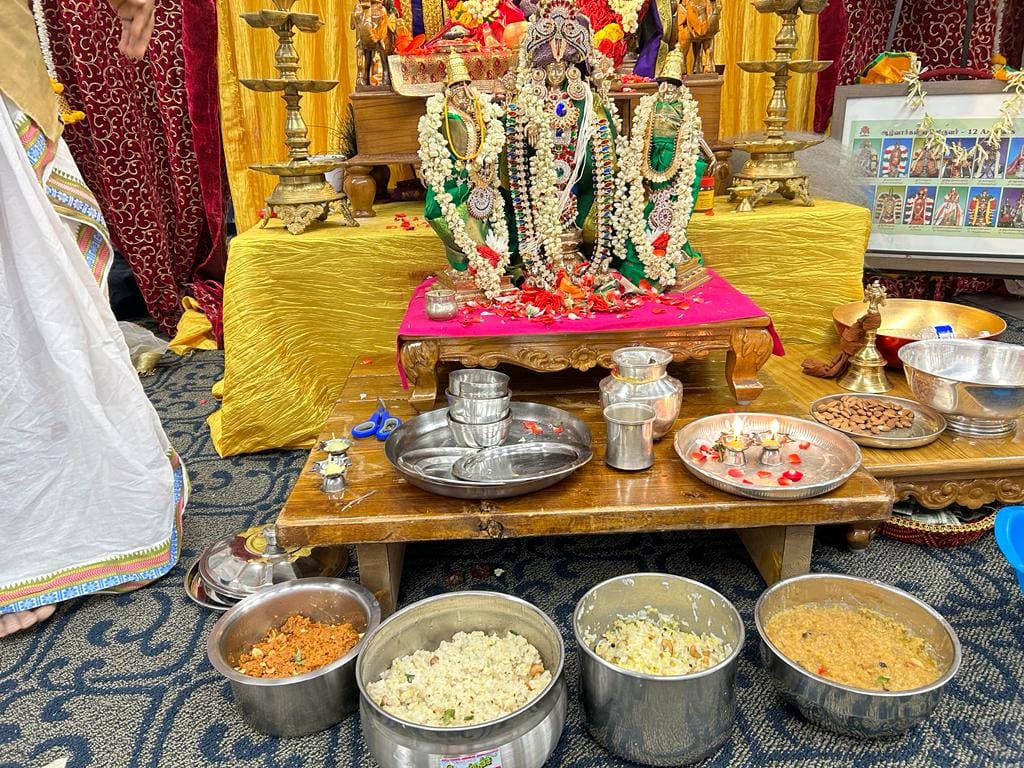Dhanurmas is considered a month of tranquility, spiritual evolution, and equilibrium. The Bhagavatam says the highest duty of a man consists in doing that which generates devotion to the Supreme Being, devotion which fills the heart of man with peace. Dhanurmas perfectly aids such devotional practices amongst common people accelerating spiritual growth.
Dhanurmas or Margazhi (in Tamil) corresponds to Margashirsha, which Shree Krishna identifies the month as Himself in the Bhagavad Gita, highlighting the spiritual essence of this time. During this auspicious month, people all over the world recite Thiruppavai, a composition of Sri Andal (one of the 12 Alwar's and the incarnation of Mother Earth) consisting of thirty stanzas referred to as pasurams in worship and praise of the Lord. This sacred work is considered as the seed of the Vedas.
You can read the story of Sri Andal Here:
Andal was discovered as a baby by her foster father Periazhwar in his garden at a town called Srivilliputhur in Tamilnadu India. Andal grew up with intense devotion to the Lord and was so fond of Lord Krishna that she pictured herself as one of the Gopis and aspired to wed the Lord. Her father used to make a garland for the Lord every day and take it to the temple and adorn the Lord. Andal used to take that garland and wear it herself and picture the scene of the Lord adorning the garland on her (symbolic of the marriage) and then admire the enhancement of her beauty and glow as she wore the Lord’s garland. Legend has it that one day, like every other day she had worn the garland before her father took it to the temple. But on that day the priest notices a strand of hair on the garland and refused to offer it to the Lord saying this is not pure and that someone had already worn it. Periazhwar was totally crestfallen at this very inauspicious happening and came home dejected and scolded the child severely. In some time, the Lord appears in the mind of the priest and orders him to bring the garland back saying that is the garland that He likes, the priest and Andal’s father Periazhwar, realize the true nature of Andal’s intense devotion and the appreciation of the same by the Lord and wear the garland on the Lord to everyone’s joy. Andal continues to celebrate her Lord and sing His praises in many a verse and does her penance to attain Him. The Thiruppavai is one such work in which her worship manifests. Eventually, one fine day, the Lord comes and marries her and takes her into His fold.
Thiruppavai can be broadly divided into three major sections with a few subsections inside them.
Section 1 (stanzas 1 – 5)–
Andal announces the intention to perform a month long Vratham (fasting), a sustained and intense worship of the Lord Narayana manifesting in the form of Lord Krishna. The first five stanzas introduce the main theme, its principle and purpose. According to Andal, one should give up luxuries during this season. Sincere prayers to God would bring abundant rain and thus prosperity. The first 2 stanzas explain how the vratham is going to be performed and the dos and don’ts of the vratham. The next 3 verses extoll the glory of the Lord generating the motivation and the energy for performing this vratham and achieve success.
Section 2 (Verses 6 – 15)–
In the next ten stanzas she describes the importance of community participation. She invites her friends to gather flowers. She essays the ambience at her village, the chirping of birds, colorful blossoms, the musical sound of butter-churning, herds of cattle with tinkling bells, the sounds of the conch from the temple. She visits each household and awakens all her friends to join her for a bath in a nearby pond. (The act of waking up is not just a physical call; it implores awakening of the soul to realize God and serve Him). She also praises the incarnations of the deity.
Section 3 (Verses 16-30) - (waking up the Lord (verses 16 -20), His praise and Worship (verses 21-28), Prayer (verse 29) and the Blessing (verse 30) –
The next five stanzas (16-20) describe her visit to the temple accompanied by her friends. The group appeases the temple guards, enters the temple, and recites prayers extolling the parents of Krishna and begging them to wake up Krishna and Balarama. Then they approach Niladevi, the consort of the deity, to have the darshan of the Lord.
The last nine stanzas (21-30) describe the glories of the deity. On receiving his blessings Andal lists her demands; milk for the vratham, white conch, lamps, flowers, and rich costume and jewelry, plenty of ghee and butter. The concluding stanza is an envoy identifying her as the daughter of Vishnucitthar (Periyalvar) who made this garland of 30 pasurams and says those who recite with devotion will have Krishna's blessings.
Thiruppavai also includes three taniyans (literally, 'singletons' or standalone verses) composed by later authors to introduce older texts. The first thaniyan, 'Nila tungastana ... ' in Sanskrit was composed by Parashara Bhattar, and the next two taniyans, 'Anna vayal pudhuvai ... ' and "Choodi kodutha..." (translated below) were composed by Sri Uyyakondar.
References:
- Thiruppavai in English | Thiruppavai (asayana.com)
- Margazi : A Month of Tranquility, Spiritual Evolution, and Equilibrium (ojassvhathayoga.com)
- Aandal Thiruppavai (Thiruppavai in the month of dhanu is considered auspicious) | Kerala for you dot in (archive.org)
- Tiruppavai - Wikipedia



